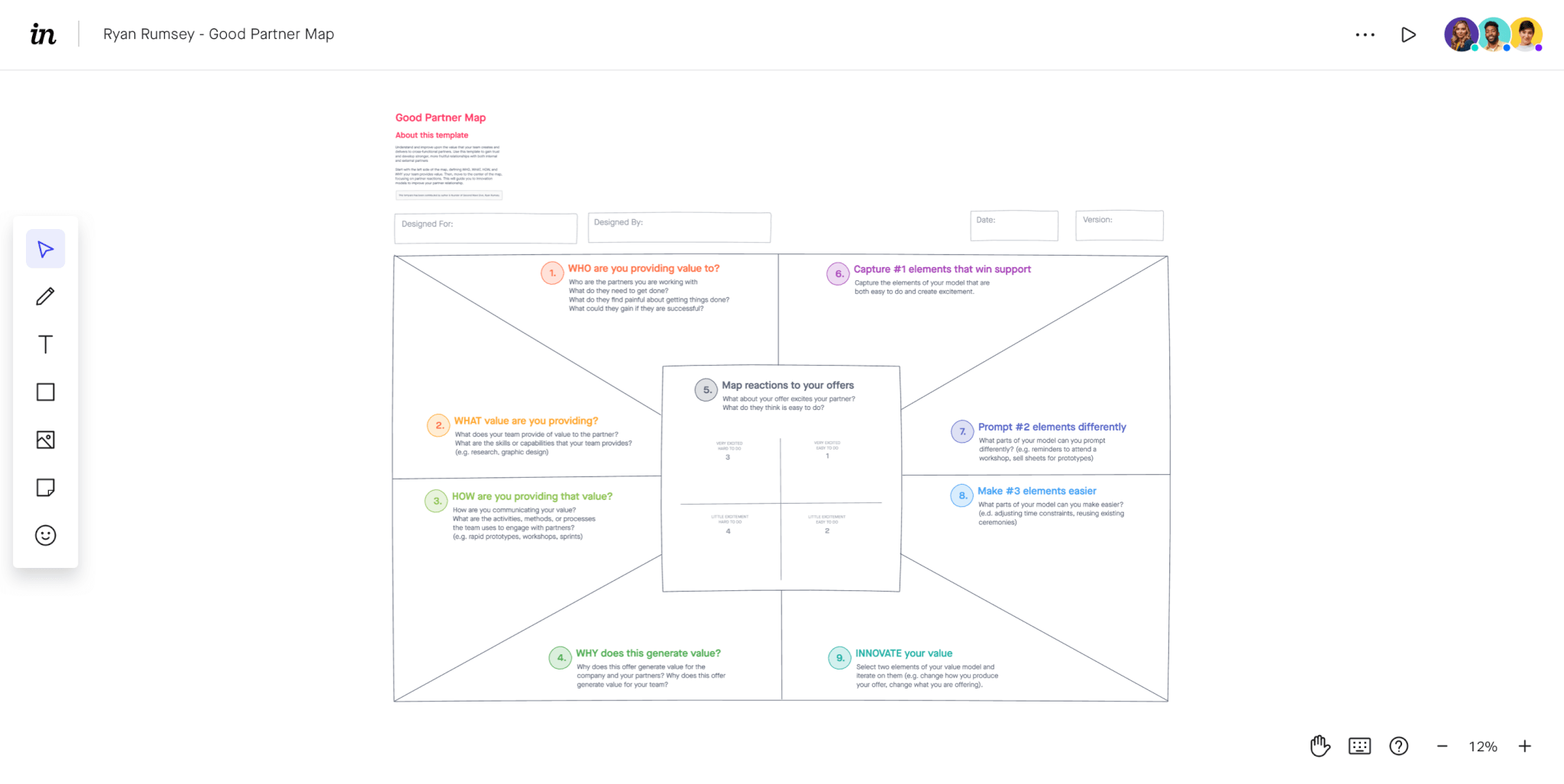
By Kosta Bolgov

This free template of Ryan Rumsey’s Good Partner Map will help your team understand its own value and become better collaborators.
Use TemplateHelp your team provide more value as a collaborative partner with the Good Partner Map by Ryan Rumsey at Second Wave Dive.
Use this good partner map template to:
Read detailed instructions for The Good Partner Map.
Part 1 Start with the Discipline Value Model to understand the perceived value of your offering.
Step 1: Identify WHO you’re providing value to Discuss your partner’s needs and goals to develop a mini-persona. Ask yourself, “who is the partner I’m working with and what do they need to get done?”
Step 2: Clarify WHAT value you are providing List all of the skills and capabilities (research, graphic design, front-end development, etc.) that provide value to your partner. Consider both tangible and intangible offerings.
Step 3: Discuss HOW you are providing your value List the activities and channels (rapid prototypes, workshops, design sprints, design systems, emails, etc.) your team uses to engage with partners.
Step 4: Elaborate on WHY the elements in steps 1–3 generate value Find your “why” as a team - why your actions generate value for your partner, team, and company.
Part 2 In the 2x2 grid, map your partners’ level of excitement about each element of your value. Ask yourself, “What about my offer excites my partner?” and “What do they think is easy or hard to do?”.
Step 5: Place the elements from steps 2–4 on the grid, ranging from high to low excitement and difficulty. The position of each element on the grid then guides your next steps.
Part 3 Refine your model by focusing on the grid you created.
Step 6: Document the elements that are both easy to do and create excitement These elements reflect the value you’re creating for your partners, and where you see alignment.
Step 7: Focus on the elements that are easy to do, but generate little excitement Address these pain points by asking two questions: Which elements can I frame differently? Can I create a new call-to-action for my partner?
Step 8: Move to the elements that are high excitement, but hard to do Make it easier for partners to engage with these elements. Ask: How can I adjust the time needed for this element to fit their schedule? How might I reuse existing ceremonies or meetings instead of creating a new meeting?
Focus on elements from steps 7 & 8, backlogging the rest. Over time, you’ll be able to iterate on your own value model by keeping a live map in Freehand, and become a much better partner to your colleagues and co-workers.